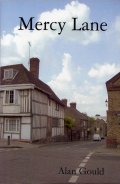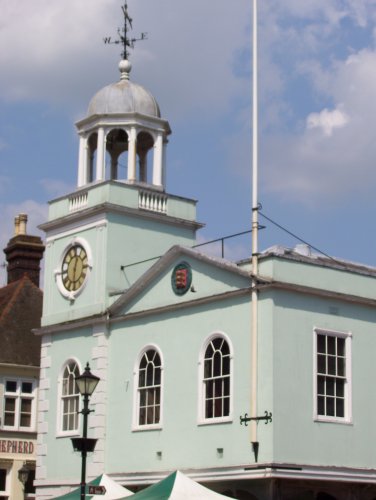
New edition, now withdrawn
 New edition, now withdrawn |
The BookIt is a combination of simple love story and a study in the mechanisms of gossip, set in the fictional town of Anderden in Kent in the year 1931, the beginning of the Ramsay Macdonald National Government and a time of economic hardship. A stranger arrives and gives his name as William Foray. He is writing a book on architecture and intends to settle in the vicinity. He takes lodgings with the family of Ernest Shepard, clerk at Salter's timberyard. He gets acquainted with Margaret Salter, the daughter of the owner of the timberyard, and they explore local architectural attractions. We are always being made aware that Foray is holding back a secret. He is recognised by Hugh Lancefield, a local wastrel. Lancefield tries to borrow money from him, and is later found dead in suspicious circumstances. Foray has to deal with the suspicion and hostility of the local community, and his budding romance with Margaret is threatened, even after he is exonerated. |
Publishing HistoryThis book was the second of the six that Canning wrote as "Alan Gould". It was published by Collins in 1937. The first edition is extremely hard to find. Canning was living in Benenden in Kent when he wrote the book. The town of Anderden is probably based on Faversham, a market town of roughly the right size and location, though Canning has changed some details to fit the story. |
ReviewsReview by Harold Brighouse, Guardian, 23 March 1937. Mercy Lane has good steersmanship. Often the rocks of sentimentality are sighted and always Mr. Gould avoids them in a novel to be recommended for its well-judged pleasantness. It is the tale of a refugee, of a man under a cloud who seeks asylum in a mellow Kentish town near Canterbury, and provincial life as it is lived today remote from industrialism is observed impartially. Mr. Gould succeeds with Shephard, the meek little man who runs the timber yard while its owner loafs; with the amiable squire; and with the waster whose suicide so nearly brings Foray to a murder charge. He succeeds, above all, with Foray in giving consistently the impression that here in this quiet town and not on the battlefield is a man facing fearful odds. This is a novel with a sound core of reality beneath a gentle surface. Review by Frank Swinnerton in The Observer, 11 April, 1937.
A miscarriage of justice has occurred in the past of Mr. Foray, the,
chief male character of Mercy Lane by Alan Gould; and it is
Foray’s interest for the inhabitants of the Kentish town of
Anderden that nothing at all is known to them of his past. He lodges
in Mercy Lane and meets some of the social lights of the town; but
only one of the Anderdenians recognises him. So life goes quietly
on, and the expected love story develops, and the gossips are
baffled, until there comes a moment of unprepared climax from which
emerges the disagreeable truth of history. The moment is quickly
past, for Mr. Gould’s object is not that of the Fat Boy in
Pickwick and a book that promises in some of its earlier
chapters to be subtle as well as quiet is muffled again in the
undistinguished comfort of a happy ending. |
Photographs of Faversham taken in May 2009. Canning has altered some features of the town for his "Anderden" but retained many others. |
|

|

|
|
"At five o’clock in the evening of October 25th, 1931, the London express pulled into Anderden Station. It was seven minutes late." (Page 1) |
"At the far end stood the Town Hall, its tall pillars shrouded in twilight." (Page 4) |

|

|
|
"... the Reverend George Talbot of Saint Mary’s Church was a man of very settled convictions, an upholder of the established order of society, and very conscious of his position as the vicar of the most important church in the town." (Page 29) |
"Thinking of the bathing place made him anxious to be down by the
river." (Page 24) |